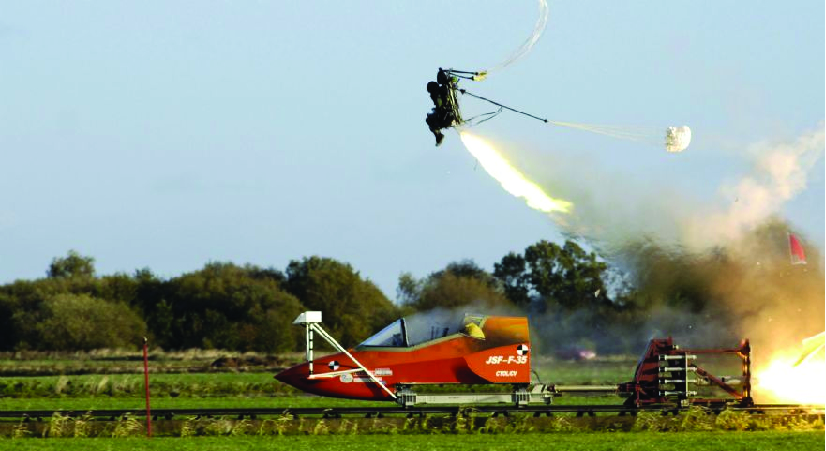
Article by
Pilot ejection seat technology has undergone remarkable evolution over the years, transforming what was once a perilous situation into a controlled escape mechanism. In the fast-paced world of aviation, where emergencies can arise unexpectedly, the development of ejector seats has played a crucial role in ensuring the safety of pilots. Let's delve into the fascinating journey of how these seats have evolved, making emergency ejections a calculated and life-saving maneuver.
In the 20th century, pilots faced a daunting challenge when it came to emergency situations. The conventional method of parachuting from fixed-wing aircraft, once a common practice, became increasingly perilous with advancements in aircraft design. The limited size of the cockpit made it difficult for pilots to bail out successfully, leading to a rising number of casualties.
The need for a safer and more effective escape method prompted scientists and engineers to pioneer ejection seat technology. Among the early contributors to this groundbreaking development was the British Aerospace Company, Martin Baker. Their commitment to creating reliable and efficient ejector seats marked the beginning of a new era in aviation safety.
The initial trials of ejection seats were undoubtedly challenging, with engineers working tirelessly to perfect this life-saving mechanism. Martin Baker, in particular, faced numerous obstacles during the development of their first ejection seat. However, these challenges spurred innovation, leading to the creation of seats equipped with advanced harnesses and seat belts.
One of the key breakthroughs in ejection seat technology was the integration of rocket motors beneath the seats. Upon activation, these rockets swiftly thrust the chair out of the aircraft in a backward direction. This powerful propulsion mechanism ensures a rapid and controlled separation of the pilot from the stricken aircraft. The automatic deployment of the parachute system follows, allowing for a carefully orchestrated descent and a safe landing.
Martin Baker has been at the forefront of ejection seat innovation, continually refining and enhancing their designs. The company's dedication to safety is evident in the meticulous engineering of their seats, which have saved countless lives over the years. The partnership of rocket propulsion and parachute deployment has become a standard feature in modern ejection seat designs, reflecting the culmination of decades of research and development.
The evolution of pilot ejection seats stands as a testament to human ingenuity and determination to overcome challenges. In emergency situations, where seconds can make the difference between life and death, these seats provide pilots with a reliable means of escape. The controlled ejection and parachute-assisted descent ensure that pilots not only survive but also have the opportunity to continue their invaluable contributions to aviation.
Pilot ejection seat technology has evolved from a rudimentary concept to a sophisticated and dependable system. The collaboration of engineering brilliance and unwavering commitment to safety has turned what was once a perilous escape into a routine and life-saving maneuver. Thanks to pioneers like Martin Baker and advancements in rocket propulsion, pilots facing emergencies can now eject from their aircraft with confidence, knowing that the evolution of ejector seats has their safety firmly in mind. As we look towards the future of aviation, the continued refinement of ejection seat technology remains paramount in preserving the lives of those who soar through the skies.
 Monthly "Azeem English Magazine", launched in 2000, records the information about diverse fields like mental health, literature, research, science, and art. The magazine's objective is to impart social, cultural, and literary values to society.
Monthly "Azeem English Magazine", launched in 2000, records the information about diverse fields like mental health, literature, research, science, and art. The magazine's objective is to impart social, cultural, and literary values to society.
+92 51 88 93 092
First Floor, RAS Arcade, Eidhi Market, Street#124, G-13/4, Islamabad, Pakistan, 44000.